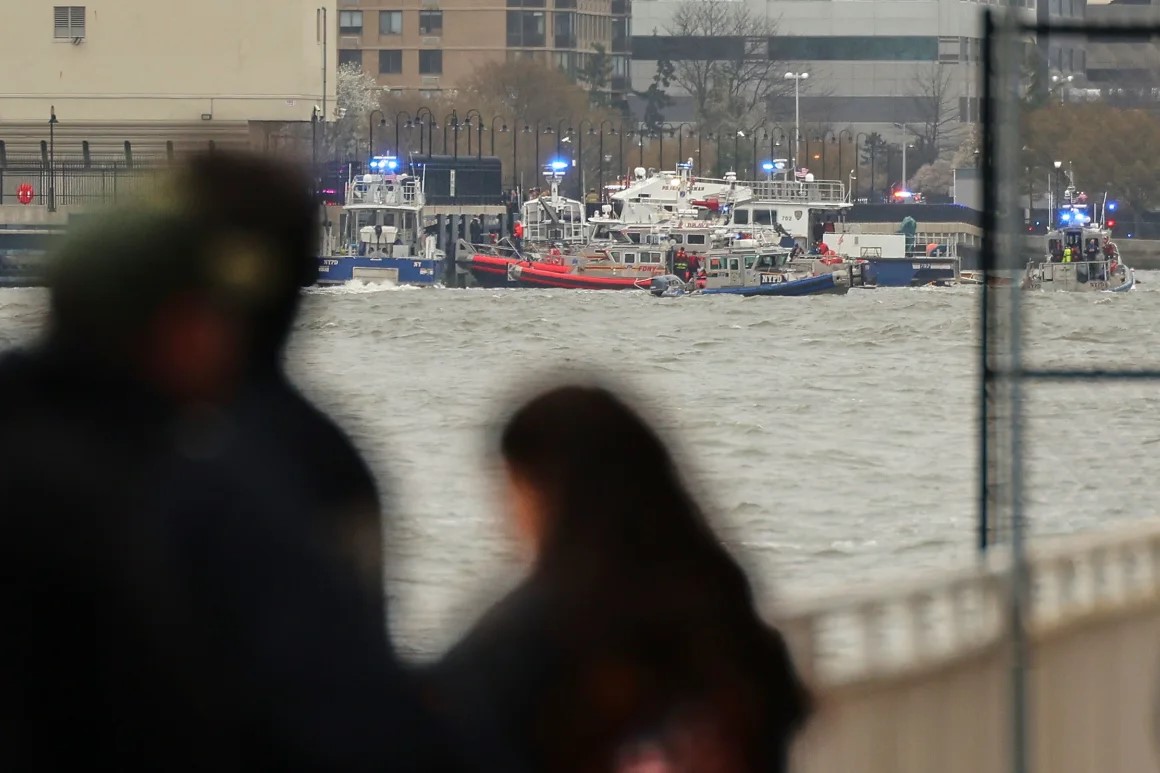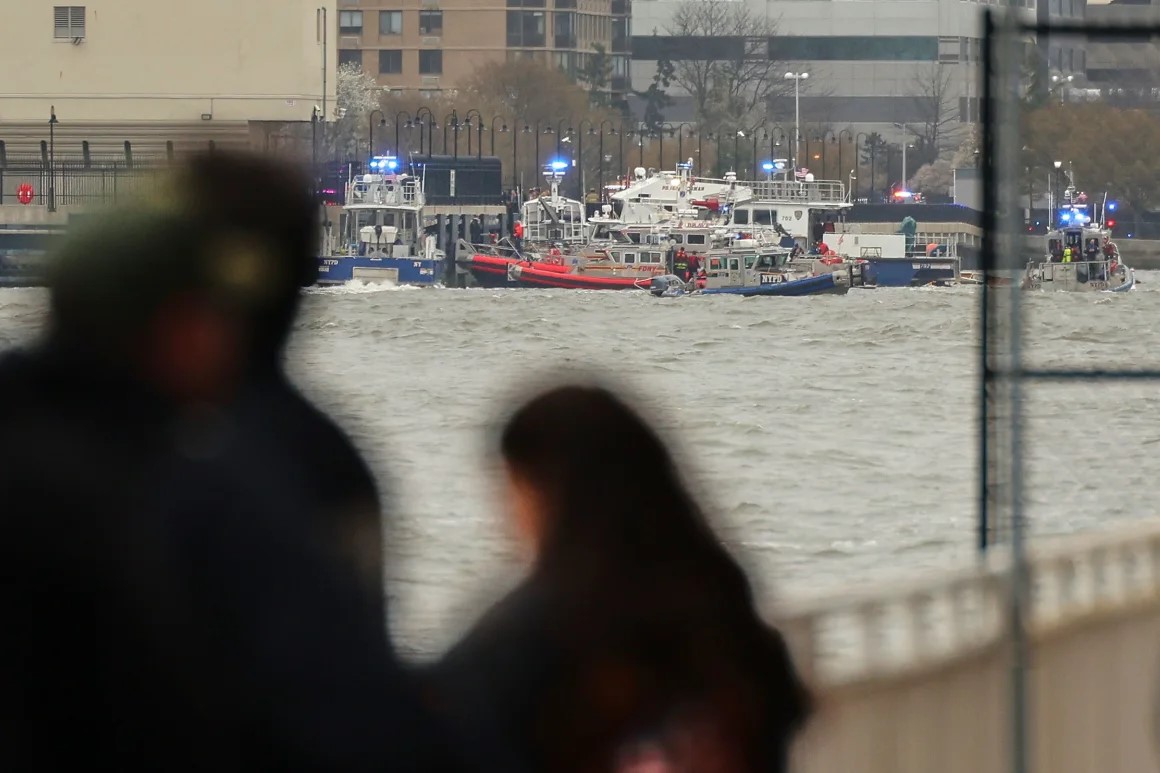Uncategorized
Hudson River Helicopter Crash: Siemens Executive and Family Among 6 Dead
A sightseeing trip turned fatal when a helicopter plunged into the Hudson River, killing a Siemens executive, his family, and their pilot. The crash has reignited concerns about helicopter safety, air traffic oversight, and operator accountability.
Overview
“It was supposed to be a joyful moment above the Manhattan skyline. Instead, it became an unimaginable tragedy.”
This shocking incident has reverberated internationally — not only for its tragic loss of life, but also for what it reveals about ongoing safety issues in civilian helicopter operations. The following article explores:
- The identities of the victims
- The sequence of the crash
- Eyewitness accounts
- Aircraft history and safety concerns
- Ongoing investigations
- What this means for future aviation safety
🚁 The Victims: A Prominent Siemens Executive and His Family
Who Was on Board?
Among the six people on board the ill-fated helicopter was Agustín Escobar, 49, a top executive at Siemens Mobility, his spouse, and their three children. All were visiting from Spain. The pilot, whose identity has yet to be released, also perished in the crash.
“We are deeply saddened by the tragic helicopter crash in which Agustin Escobar and his family lost their lives,” said a Siemens Mobility spokesperson in a public statement to CNN.
Escobar was the CEO of Rail Infrastructure at Siemens Mobility, a division focused on global transportation solutions. Siemens, a German multinational technology giant, has expressed its condolences and confirmed it is providing support to the bereaved families.
New York Mayor Eric Adams and Spanish Prime Minister Pedro Sánchez both issued public condolences, calling the incident “devastating” and “unimaginable.”
⏱️ Timeline of the Siemens Executive
What Happened That Day?
The helicopter took off at 2:59 PM from Manhattan’s downtown heliport, embarking on a popular sightseeing route. It circled the Statue of Liberty, then flew north up the Hudson River toward the George Washington Bridge before turning south along the New Jersey shoreline.
By 3:17 PM, just 16 minutes into the flight, witnesses say the aircraft lost control:
- The rotor blades detached from the helicopter mid-air.
- The helicopter flipped and spiraled, crashing upside down near Pier A Park in Hoboken, New Jersey.
“It was nose down, slightly. I saw the propeller separate. It kept spinning in the air alone. Nothing was attached to it.”
— Sarah Jane Raymond Ryer, eyewitness, speaking to WCBS
Emergency Response
Multiple 911 calls were placed immediately. NYPD and FDNY first responders rushed to the site:
- Six individuals were pulled from the water
- Four were pronounced dead on scene
- Two children were taken to the hospital, but died shortly after arrival
Mayor Steven Fulop confirmed the children’s deaths via a statement on X (formerly Twitter).
👁️🗨️ Eyewitness Accounts: What People Saw and Heard
Jersey City residents reported unsettling scenes and sounds:
- Loud mechanical noises, compared to thunder or explosions
- Debris and black particles scattering in the air
- Initial confusion followed by wailing sirens and emergency vehicles
“I saw black particles flying. I thought maybe it’s just dust or birds. Then all the sirens came.”
— Ipsitaa Banigrhi, Jersey City resident
Some onlookers assumed the noise was routine or harmless, but the emerging chaos quickly confirmed otherwise.
🔧 The Helicopter: Bell 206L-4 LongRanger IV
A Model with a Troubled History
The downed aircraft was a Bell 206L-4 LongRanger IV, manufactured in 2004. According to FAA records, it held an airworthiness certificate valid through 2029.
However, there’s more beneath the surface:
⚠️ Safety Directives Previously Issued:
- May 2023: FAA directive to inspect and possibly replace tail rotor drive shafts due to joint failure risks.
- December 2022: Mandatory inspection of main rotor blades for delamination, which could cause mid-air disintegration.
These directives raise serious concerns about whether the aircraft was properly maintained and whether these issues contributed to the crash.
Delamination, a critical structural issue, causes layers of the rotor blade to separate, weakening its integrity and increasing the risk of in-flight failure.
Read more about delamination in aviation

🛠️ Safety Record of the Operator
A Troubling Past
The helicopter’s operator, New York Helicopter Charter, has a checkered safety history:
- 2015: FAA found corrosion and deformation in parts that rendered a similar helicopter “unairworthy.”
- 2013: A different aircraft was forced to emergency land on water after an “Engine Out” warning. All passengers were rescued, but the incident raised red flags about equipment reliability.
Despite these previous incidents, the operator continued to run sightseeing flights — a type of operation often falling in regulatory gray zones under the Special Flight Rules Area (SFRA).
“The only thing I can tell you is that we are devastated. I’m a father, a grandfather… my wife hasn’t stopped crying.”
— Michael Roth, CEO of the helicopter operator
When asked about the helicopter’s maintenance records, Roth deferred to his Director of Maintenance, who declined to comment.
Note: Maintenance logs are not publicly accessible, and under NTSB rules, companies are limited in what they can disclose during ongoing investigations.
🔍 The Investigation: What Authorities Are Saying
FAA and NTSB Join Forces
The crash is under joint investigation by the Federal Aviation Administration (FAA) and the National Transportation Safety Board (NTSB). According to a statement on social media, the NTSB dispatched a “go-team” of experts to the site to begin a full analysis of the wreckage.
- Investigators will examine the fuselage, flight path, maintenance records, and potential compliance failures with federal safety directives.
- Dive teams continue underwater recovery near Pier A Park, searching for detached rotor components and black box data, if available.
“Our mission is to determine what happened — and more importantly — why, so we can prevent a tragedy like this from ever happening again.”
— NTSB Investigator in Charge (IIC), preliminary statement
Maintenance history, though not publicly accessible, will be a key focus of the investigation, along with weather conditions, visibility, and mechanical integrity of the helicopter’s critical components.
📉 A Pattern of Neglect? Industry Scrutiny Intensifies
The crash has reignited debate over tourism-based helicopter flights and their regulatory oversight, particularly in the Special Flight Rules Area (SFRA) that covers Manhattan.
The SFRA Loophole
In this zone:
- Pilots self-report their positions, as Air Traffic Control (ATC) coverage is limited.
- Aircraft like the Bell 206L are often flown under Visual Flight Rules (VFR), meaning weather changes and mechanical issues become even more dangerous.
- Tour flights may bypass Part 135 regulations, which apply to commercial air carriers and impose stricter safety requirements.
Transportation Secretary Sean Duffy noted in a post on X, that the helicopter had been receiving ATC guidance from LaGuardia Airport, but had entered the uncontrolled zone shortly before its catastrophic failure.
Critics argue that this system prioritizes profit over safety, exposing tourists to unnecessary risks in one of the world’s most congested airspaces.
⚙️ Did Federal Warnings Go Unheeded?
In addition to prior incidents involving the operator, the Bell 206L-4 model has been the subject of multiple airworthiness directives:
- May 2023 FAA Directive:
- Required inspection and possible replacement of the tail rotor drive shafts.
- Prompted by joint failure in a similar aircraft, which could lead to tail rotor detachment.
- December 2022 FAA Directive:
- Called for detailed checks of main rotor blades for delamination — a dangerous weakening that may result in mid-air separation.
The video footage obtained by CNN — showing rotor blades detaching mid-flight — appears alarmingly consistent with these mechanical risks.
“If these warnings weren’t acted upon, then this tragedy wasn’t just a malfunction — it was a preventable failure.”
— Aviation Safety Analyst, quoted anonymously
🏙️ Implications for the Helicopter Tourism Industry
The crash has renewed calls for stricter regulations on urban sightseeing helicopters, especially in New York City, which has long been a hub for aerial tourism.
Why the Pressure Is Mounting:
- Dense airspace + high pedestrian population = elevated risk
- Recurring safety violations among small operators
- Lack of mandatory flight data recorders in many small aircraft
- Tourist helicopters often use older models with incomplete upgrades
“You wouldn’t let your family drive in a 20-year-old car with a recalled airbag — why should tourists be flown in aging aircraft with flagged components?”
— Consumer Aviation Advocate, New York
Potential Changes Being Discussed:
- Mandatory Part 135 certification for all tour operators
- Increased maintenance oversight and FAA audits
- Installing crash-resistant flight data recorders
- Creating no-fly zones over high-density population centers
🏢 Impact on Siemens Executive and Global Industry
The death of Agustín Escobar is being mourned not only by his family and colleagues, but across the global mobility industry.
Escobar was:
- CEO of Rail Infrastructure at Siemens Mobility
- A key figure in Siemens’ transportation innovation initiatives
- Leading efforts in sustainable rail networks across Europe and North America
The company released a statement confirming its shock and sorrow, while pledging to continue Escobar’s mission of safer, greener transit solutions.
“Agustin was a visionary — respected by peers, adored by his teams, and an irreplaceable leader. His legacy lives on.”
— Siemens Mobility Official
🔗 Related Reading
- CNN’s Full Crash Coverage
- FAA Airworthiness Directives for Bell 206
- What Is the SFRA and Why It Matters
💬 Final Thoughts
The loss of six lives — including an entire family and a pioneering executive — is a sobering reminder that aviation safety is never optional.
“Flying over Manhattan should be awe-inspiring, not life-threatening. If regulators and operators don’t change course, more lives may be lost for a view from the top.”
See more at here: Kadarktee

